Map Making Crafting and Theory: Nameless Revenge
After nearly a year, I finally have finished the blocking phase for my latest Quake map, Nameless Revenge. Conventional level design wisdom says that blocking out my map (building the basic primitive shape of every room, completing the golden path more or less) should have been the quickest phase to exit, but we all do things different, and I'm just learning my process. With this map, at least, the blocking phase involved a lot of micro sprints through the various other phases that level designers do, all the while I have been learning my tools. But, hey! the golden path has been laid down and now the whole thing is there to be walked.
1. Map Making
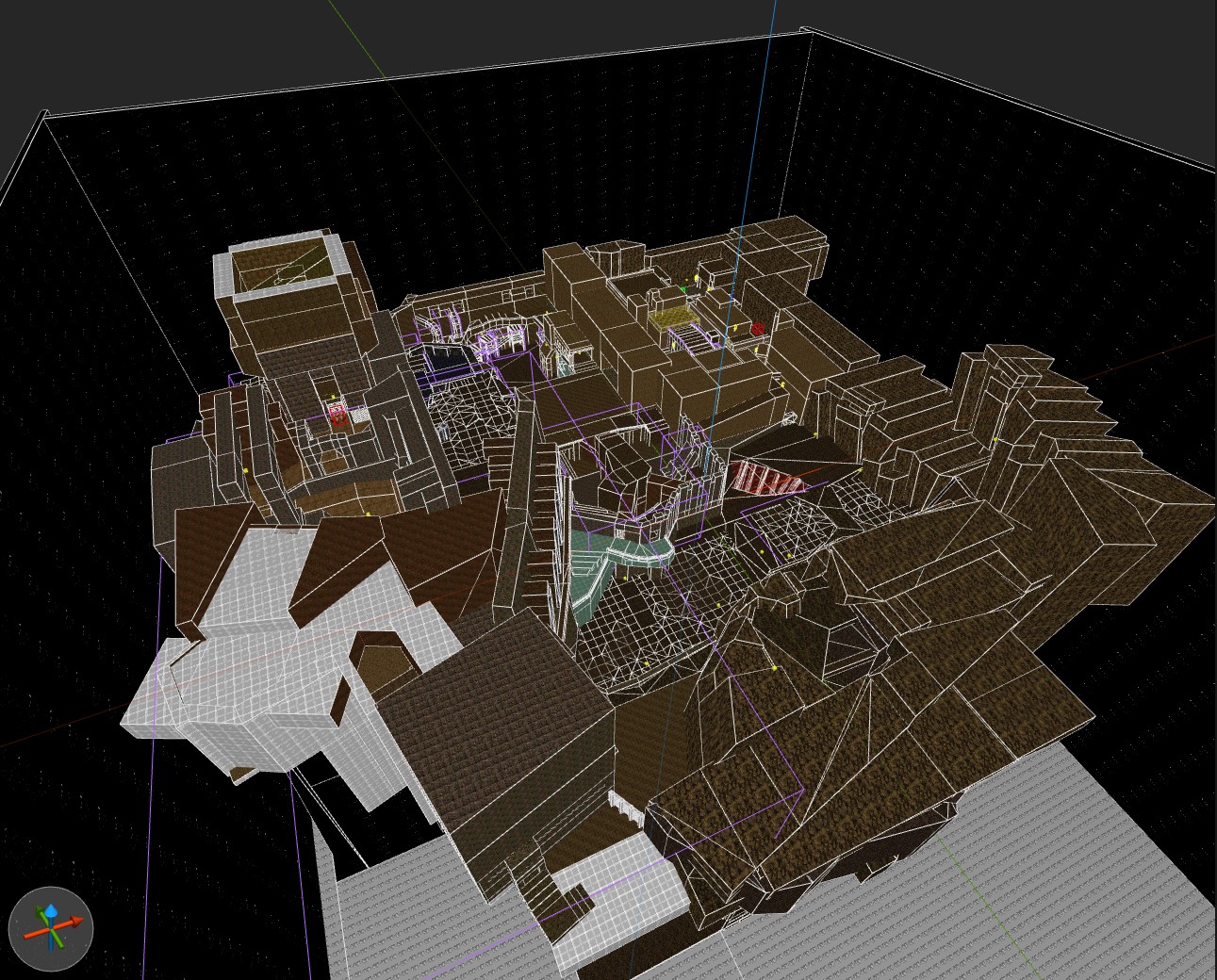
I started this map back in January with only the hope to create a map with a decrepit urban environment like Bloodborne or the zombie city levels in Painkiller. My first goal was to practice scale. I blocked out a small but fun loop involving a few urban buildings: alley ways, rooftops, a bridge, a secret garden, a grain elevator, and a gate looking into a blocked off section of the city where the level would end.
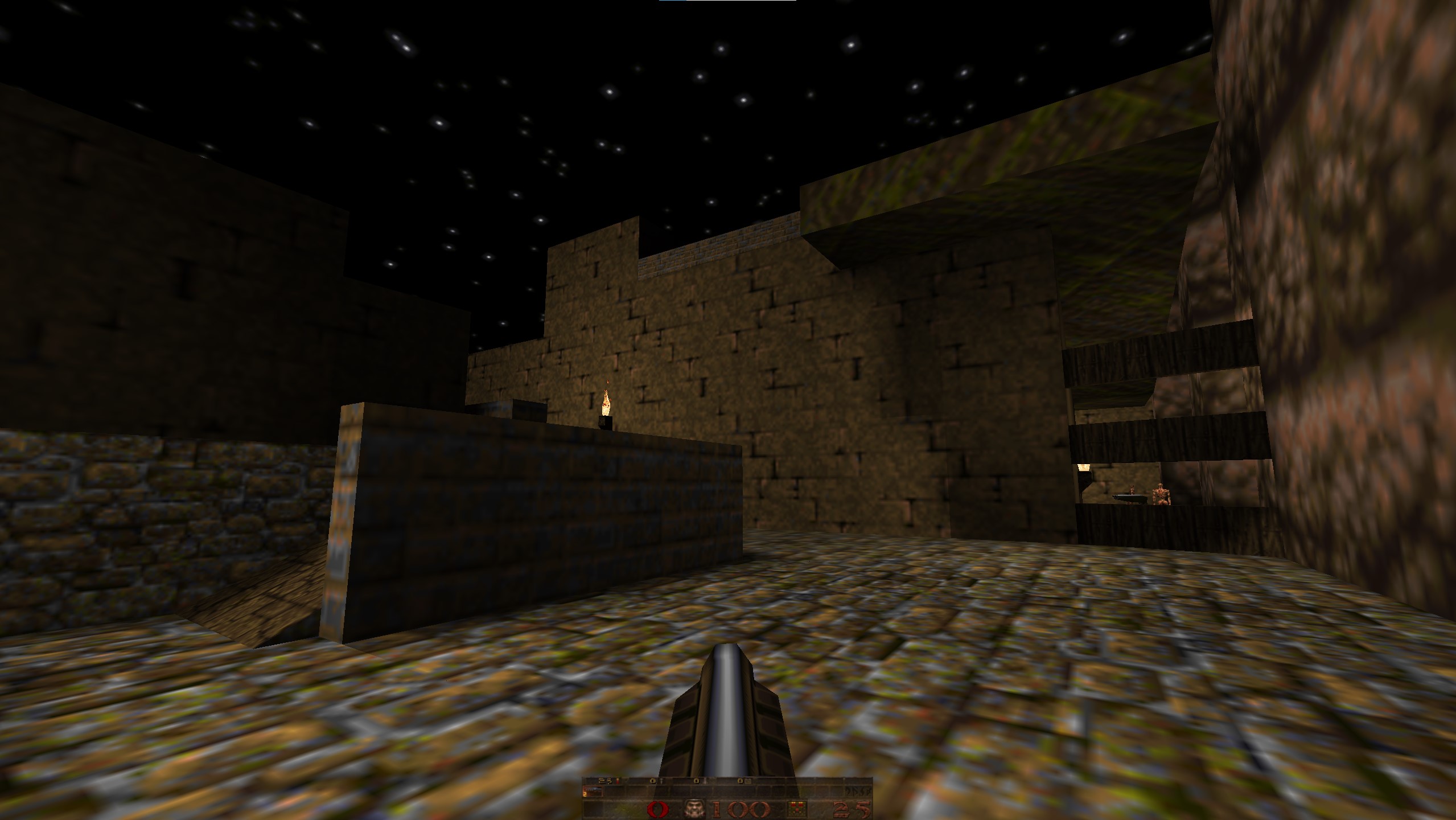
I wanted to do something more deliberate and ambitious than the very first map I made in Trenchbroom, crowded mouth. So I quickly abandoned the conservative goal of working on scale and just started doing shit. I made the next area a dry river bed backed by a dam, far too big to support fun combat but just enough to handle exploration.
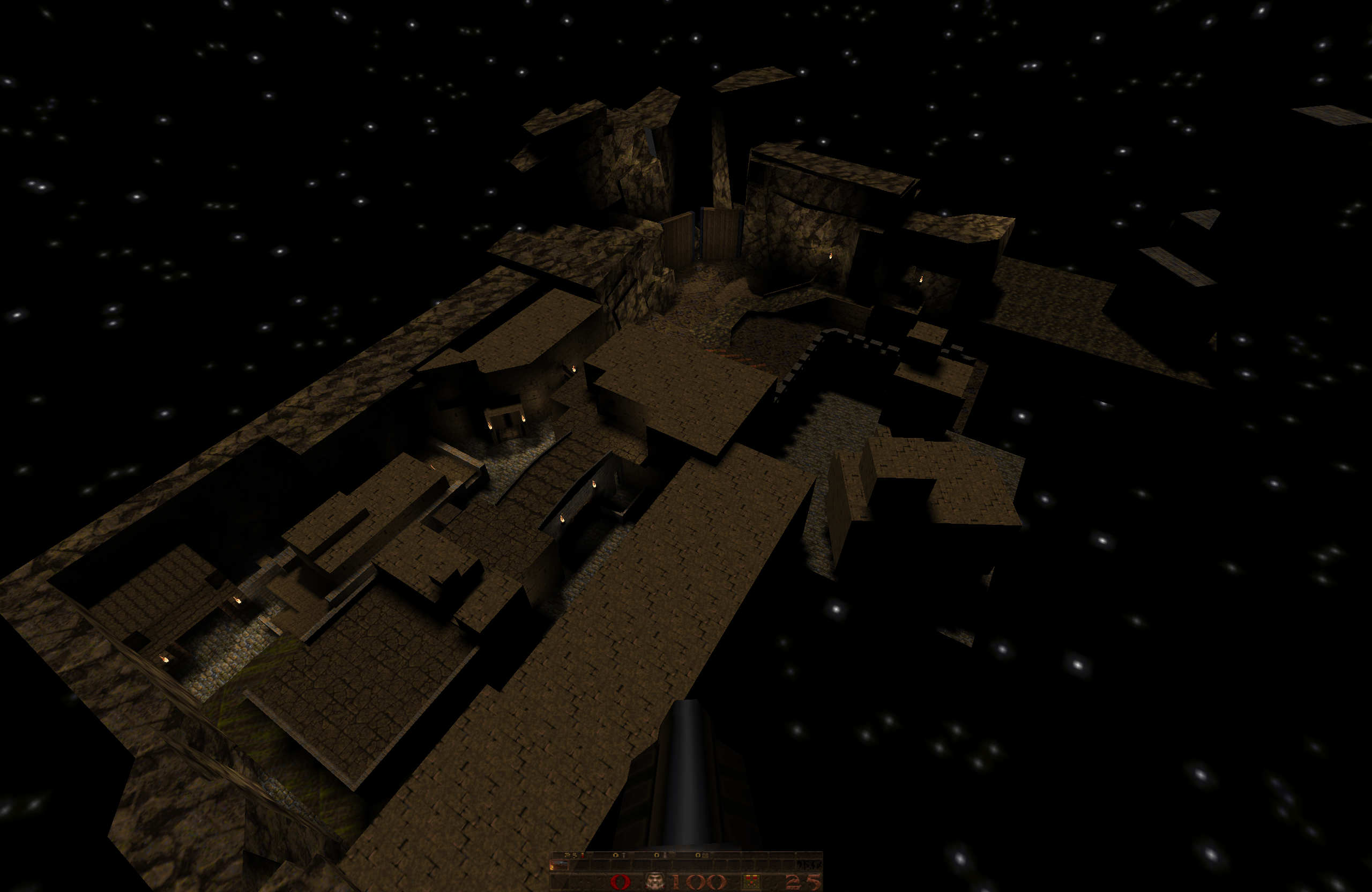
It didn't take long before I was feeling self conscious about not designing combat encounters, so dug into an exercise of designing a decent combat encounter that would be accented by interesting architecture. I built a cave tunnel with some cool ruin like stairs, walls, and windows that was inspired by the area you fight Dark Souls' Quelaag. It took a little to come together, and I learned about why you want to build your geometry on-grid during this, and I am excited by the end result.
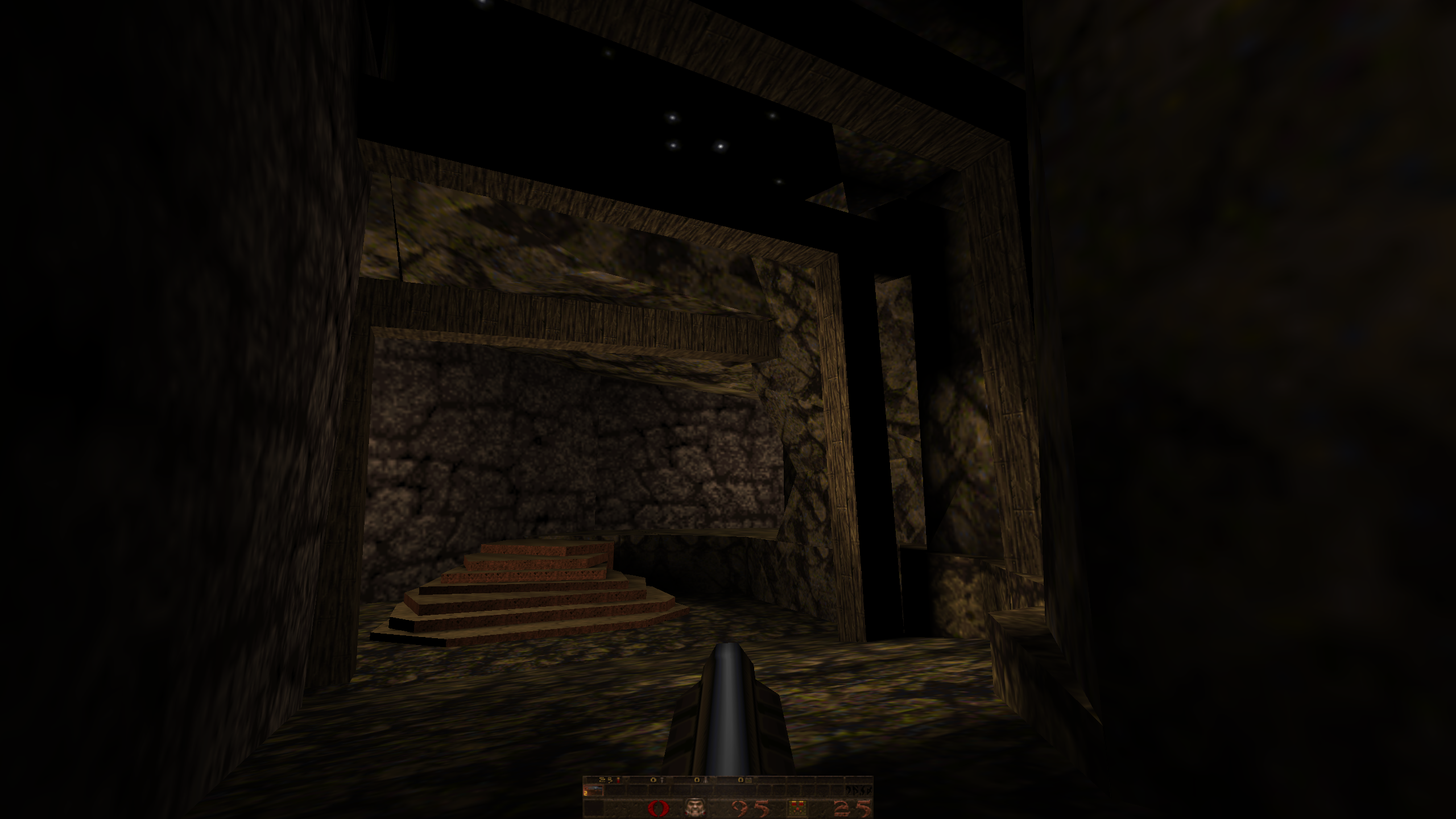
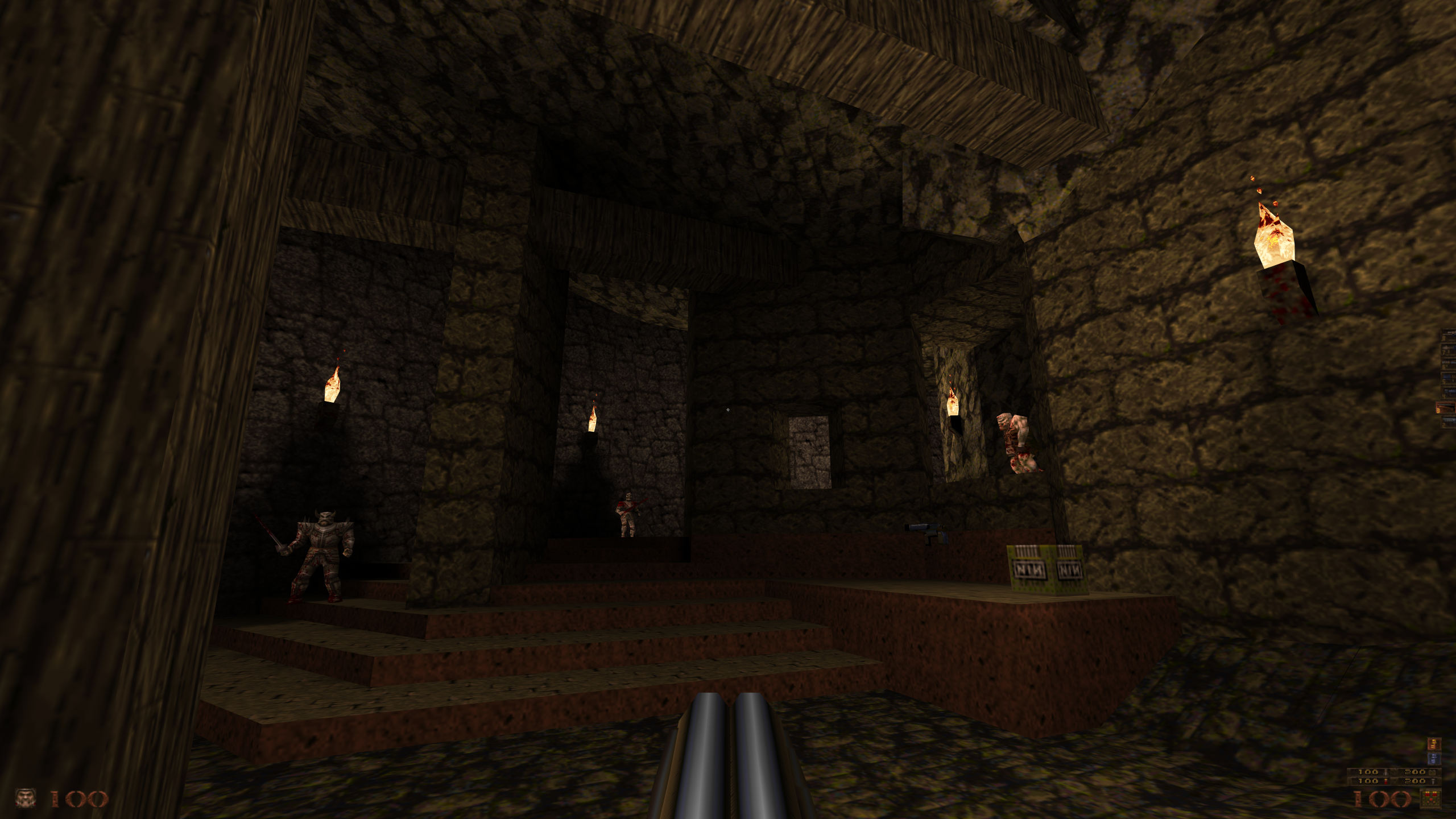
By this point I was envisioning an ambient narrative for the map about the processing of water, the separation of wild nature from tamed magics. My next area was an in-door human facility for the treatment of water, which was when my ambitions really took over and I started to design fun spaces and environmental puzzles. I care a lot about movement. Combat is fun to me because it involves movement, but I don't really care about having something to kill. Platforming and exploration are just as fun. So for the next set of areas I sent players traveling upward in order that they could travel downward. I made a mote full of piranhas that players would need to platform across to trigger an elevator and a bridge. I made borrowed designs from a scrapped map effort from earlier in 2022, iterating on what absolutely did not work in this new context with great success.
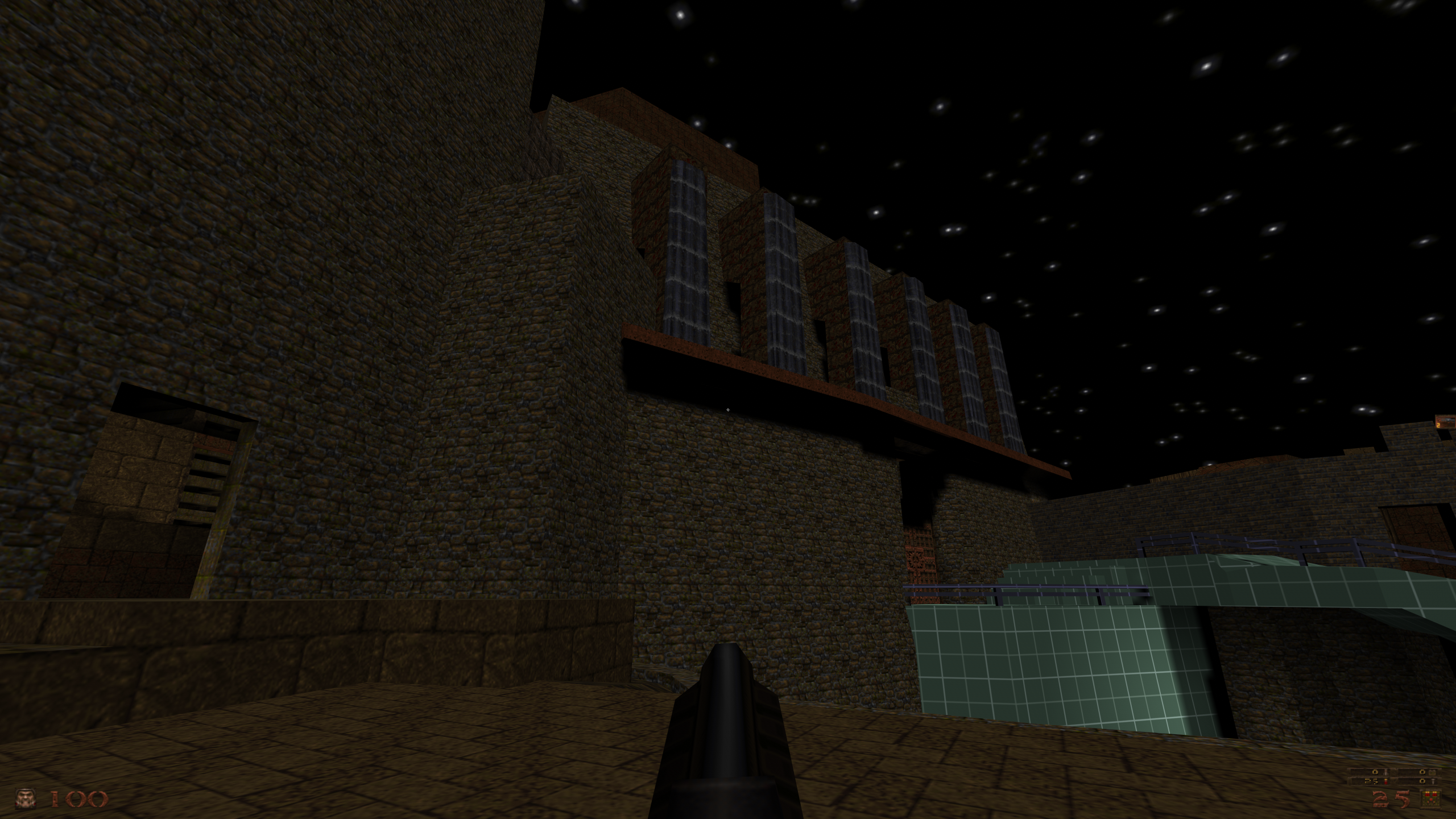
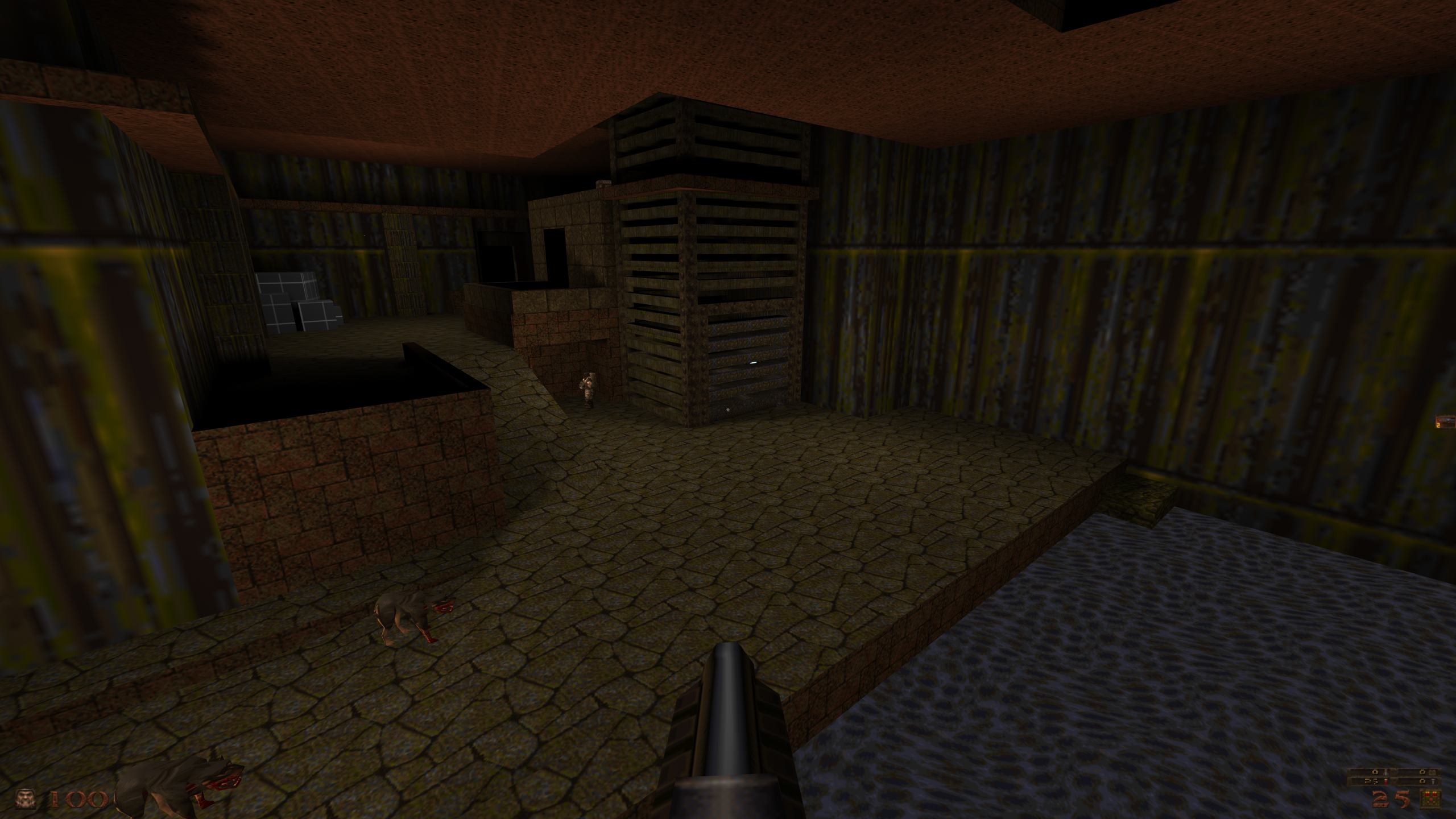
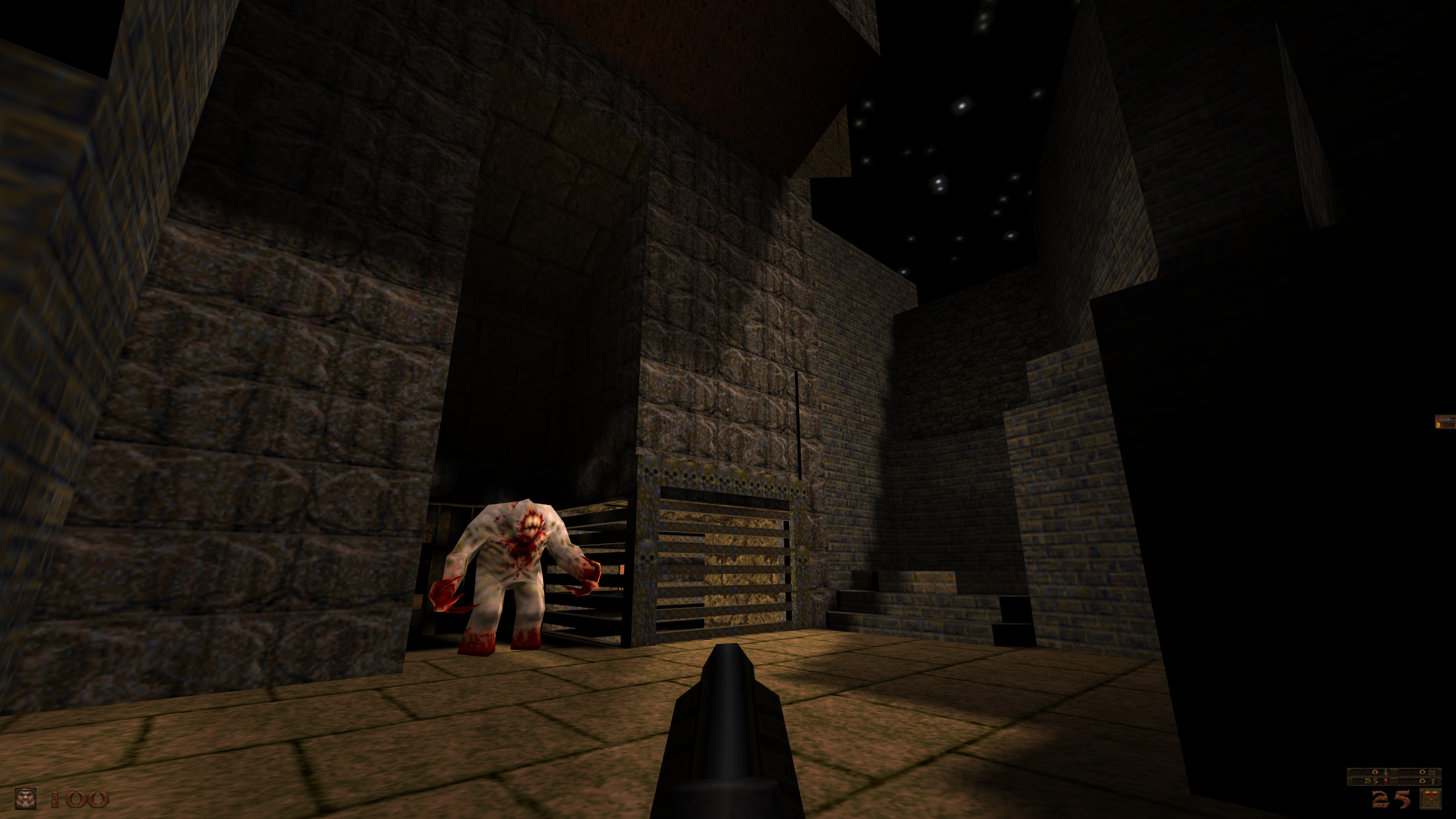
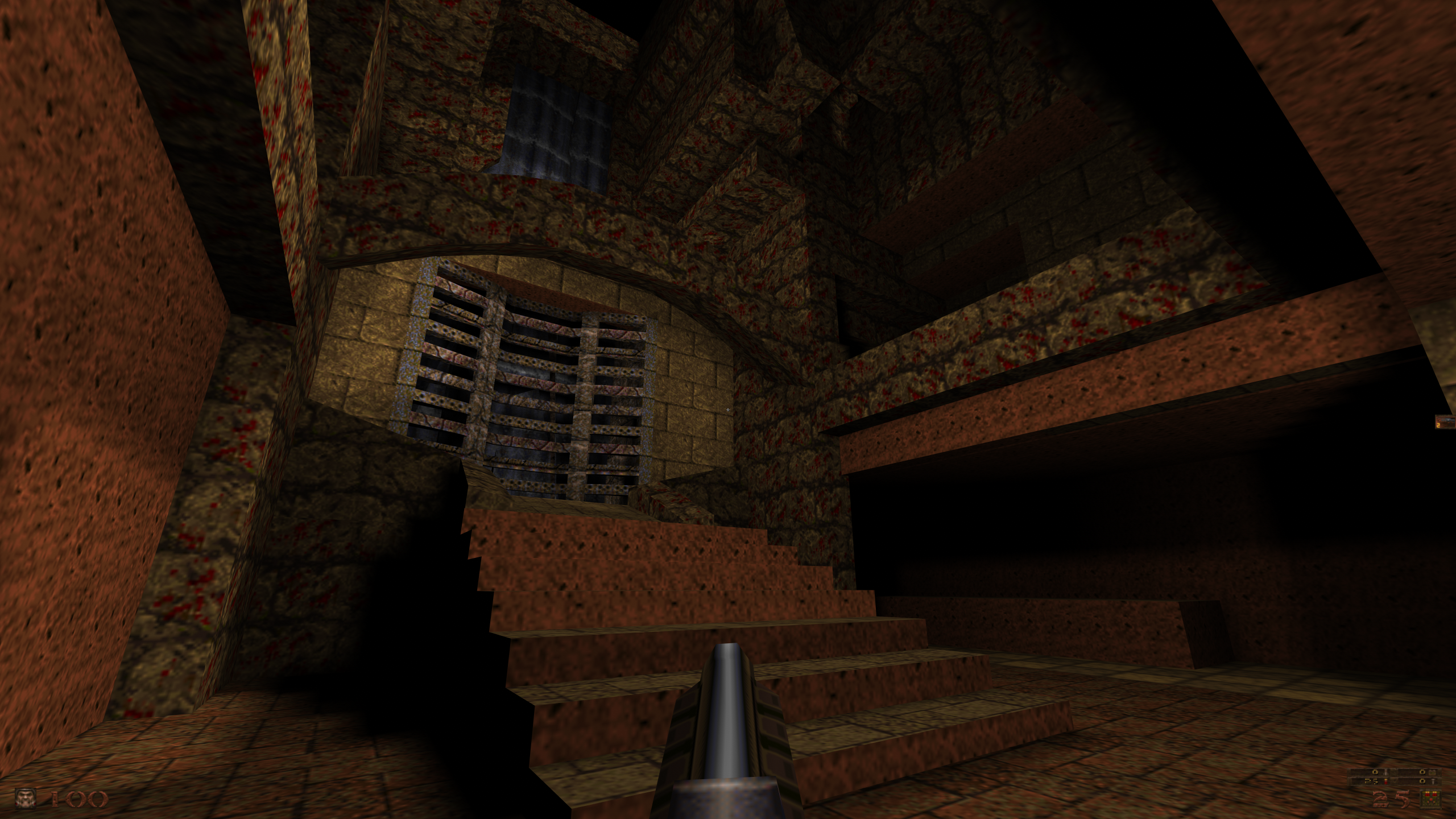
The water treatment facility and drippy cave beneath are some of the coolest parts of Nameless Revenge. They are also where I began to feel more confident with Trenchbroom's tools for shaping brushes. As I return to these spaces now, in the embellishing phase, I feel like the greater visual detail I am adding is contributing to an already very fun tactile experience that comes from well thought out level design. This part feels like quite an adventure to me.
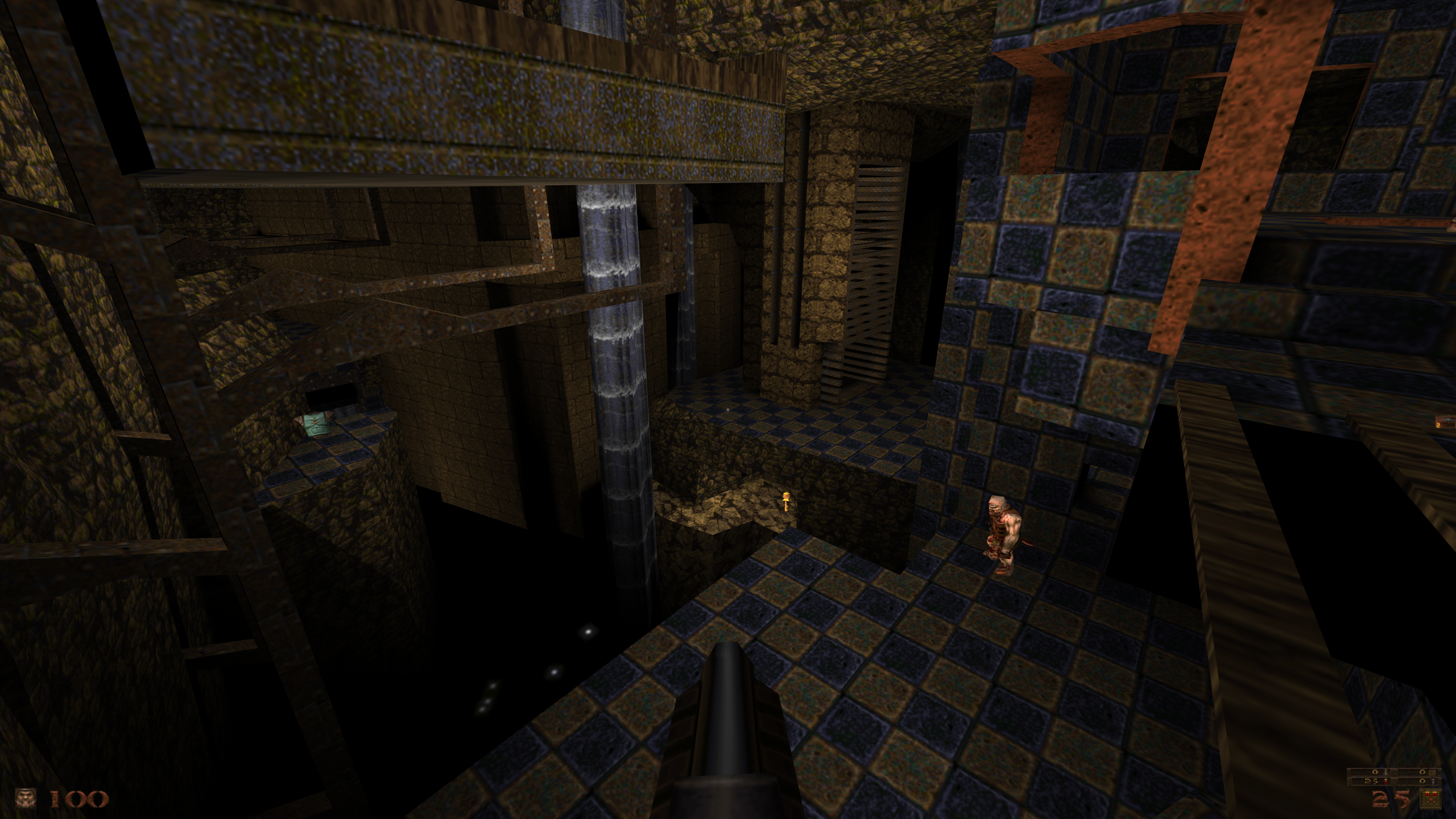
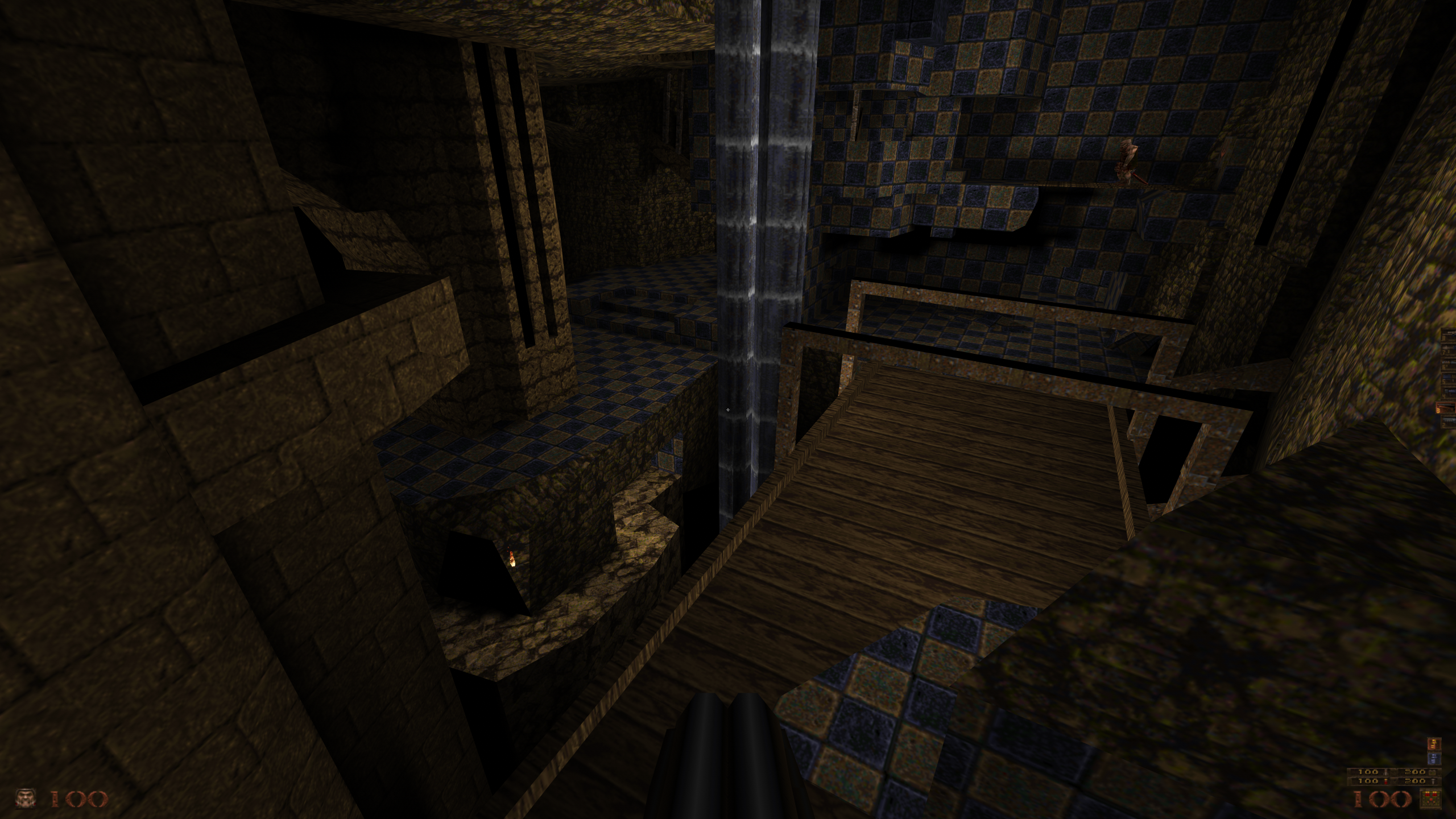
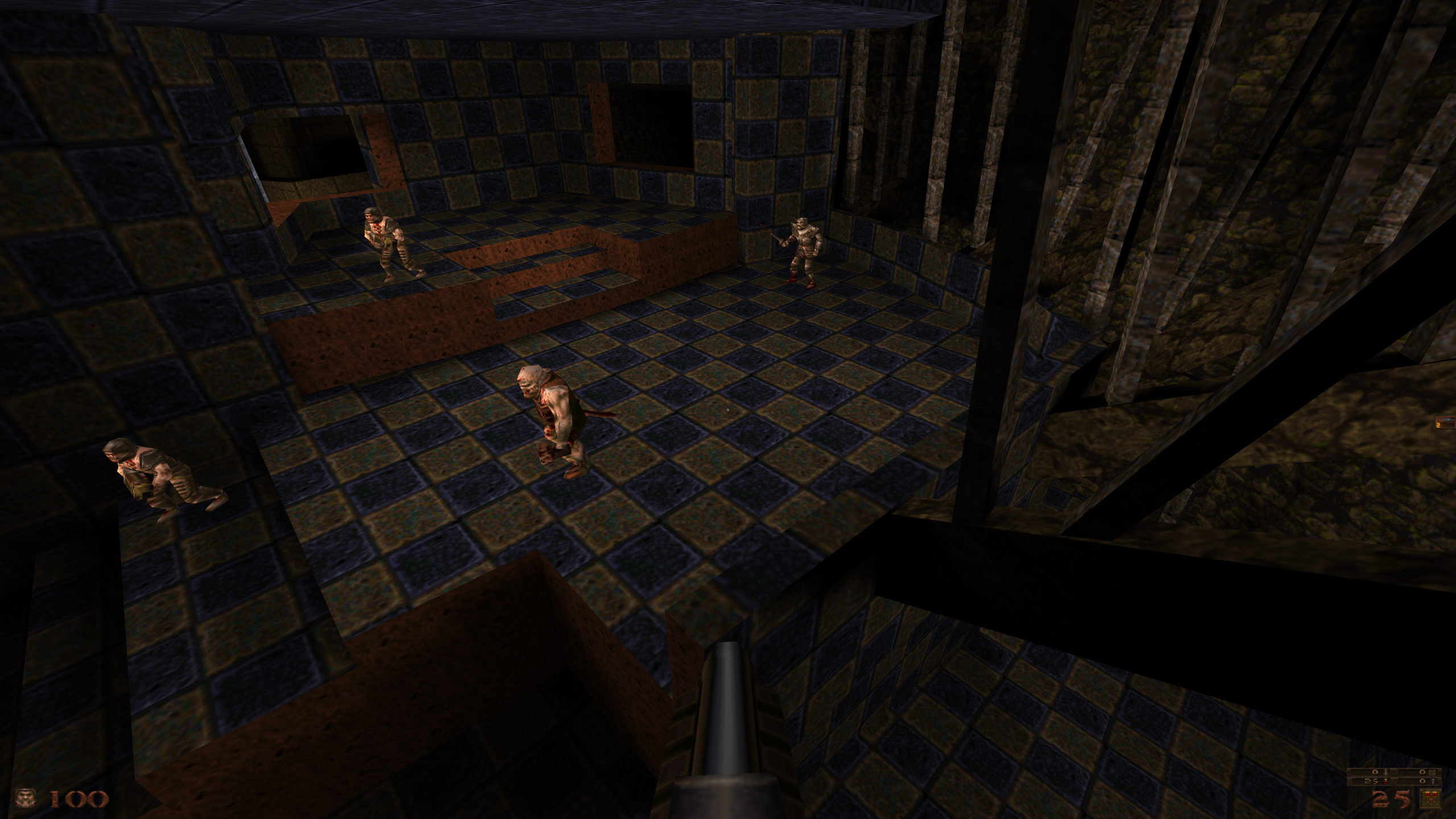
The completion of the water facility with it ended a long detour I had started, which was always meant to reconnect with the city, outlands, castle-y area I built out maybe six months prior.
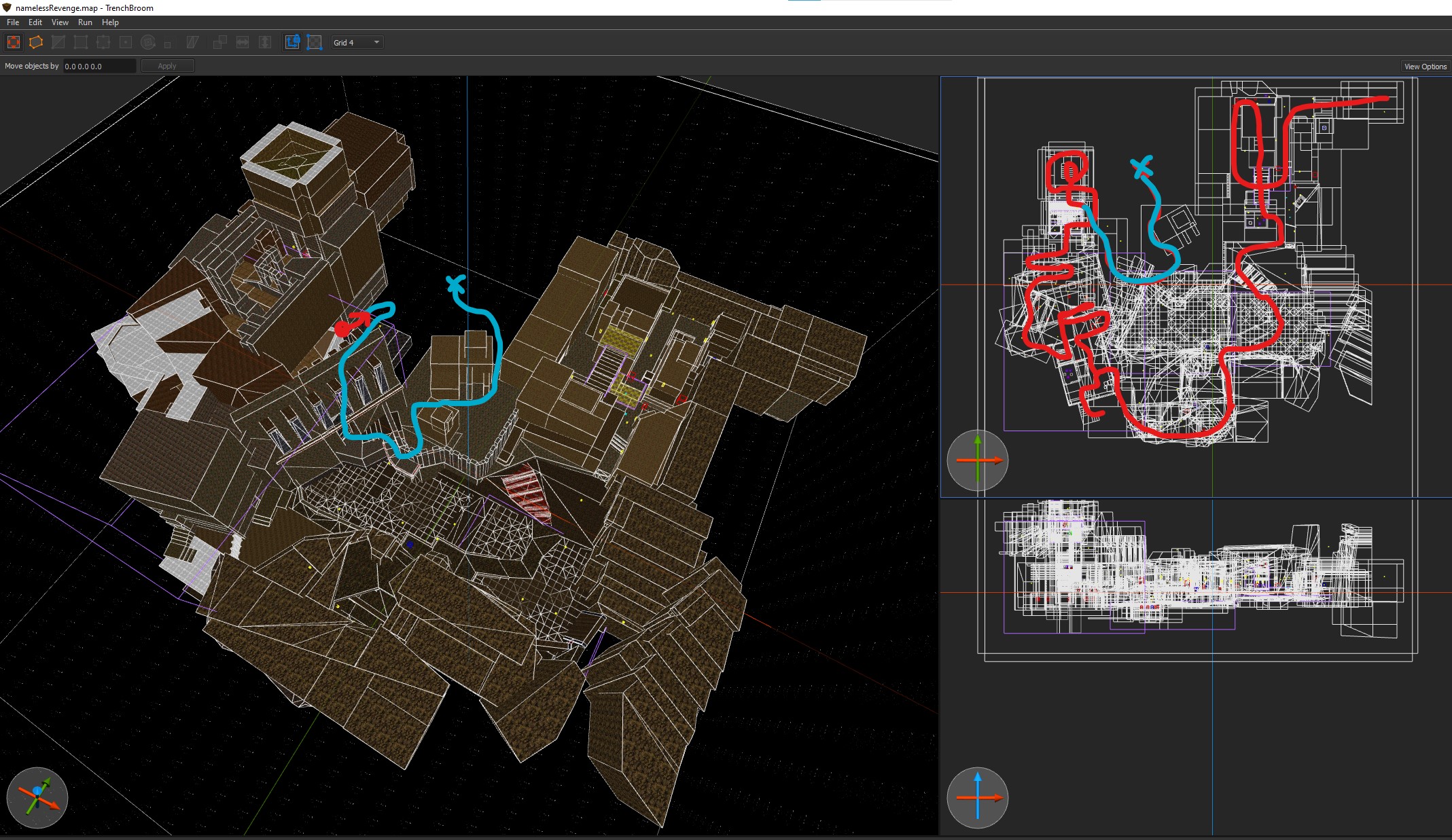
I wasn't sure what the next area would be. In fact, I'm still unhappy with what is currently there and I will need to work on it more before publishing Nameless Revenge. But the next area--the final area in the whole map--has been the most exciting part of the entire development process.
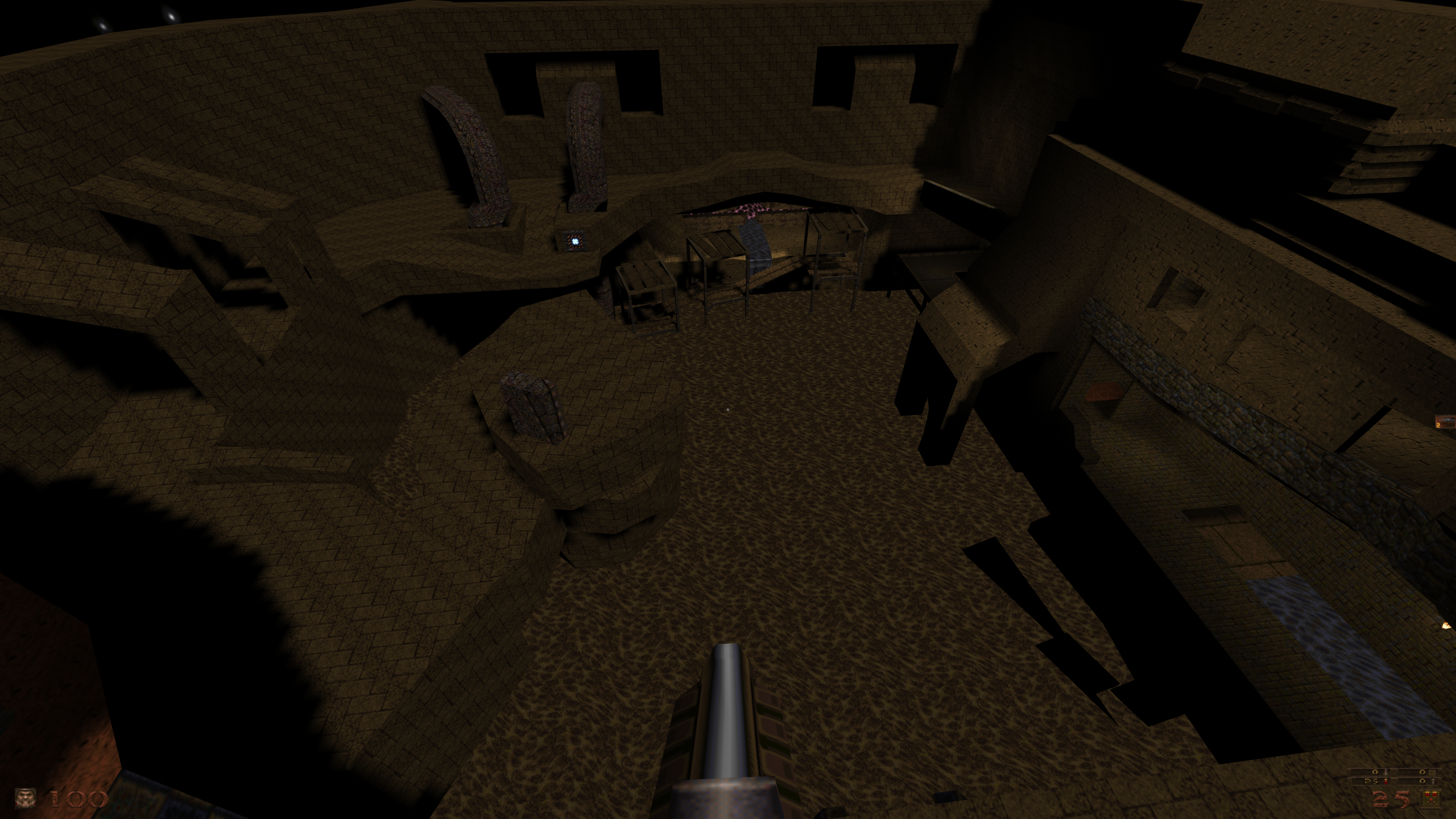
This is a large, flooded arena connected to a sewer which the players have to fall into. The exit is the sewer entrance, visible from before the drop and accessible from the floor of the arena via some planks. Your exit is obstructed by a great gate that only opens when three switches have been pressed, operating a mechanism that seems to relate to pipes that are cutting into the arena in various places.
In the player's quest to open this door, they will encounter a Shambler that spawns at the center of the arena. This particular Shambler is a mod I created, a sniper form of the original that can attack you with lightning from a significantly increased distance. When I dreamt of creating a final encounter like this I hadn't realized that the Shambler couldn't attack the player from the distance I needed it to attack from. I almost faltered and did something different, but I was inspired by what I had been reading in John Romero's recent autobiography Doom Guy: Life in First Person and decided to learn how I could make a mod. In one afternoon during a vacation I fell down an exciting rabbit hole involving Quake's source code, a fan made compiler and other tools, talking to real people in a community Quake development discord, creating a brand new NPC monster and importing it into a FGD file so that I can build a level with it in-editor. After all this research I was able to produce my first, very small mod that allowed me to build the encounter I dreamed of doing. It was immensely meaningful for me to engage with a community in this way, the decades of knowledge and tools amassed and made available without restriction. And in the end I had the encounter I dreamed of and I had reached a pivotal moment in the development of Nameless Revenge: the long rough draft writing phase I began in January 2023 finally ended that day in September of the same year.
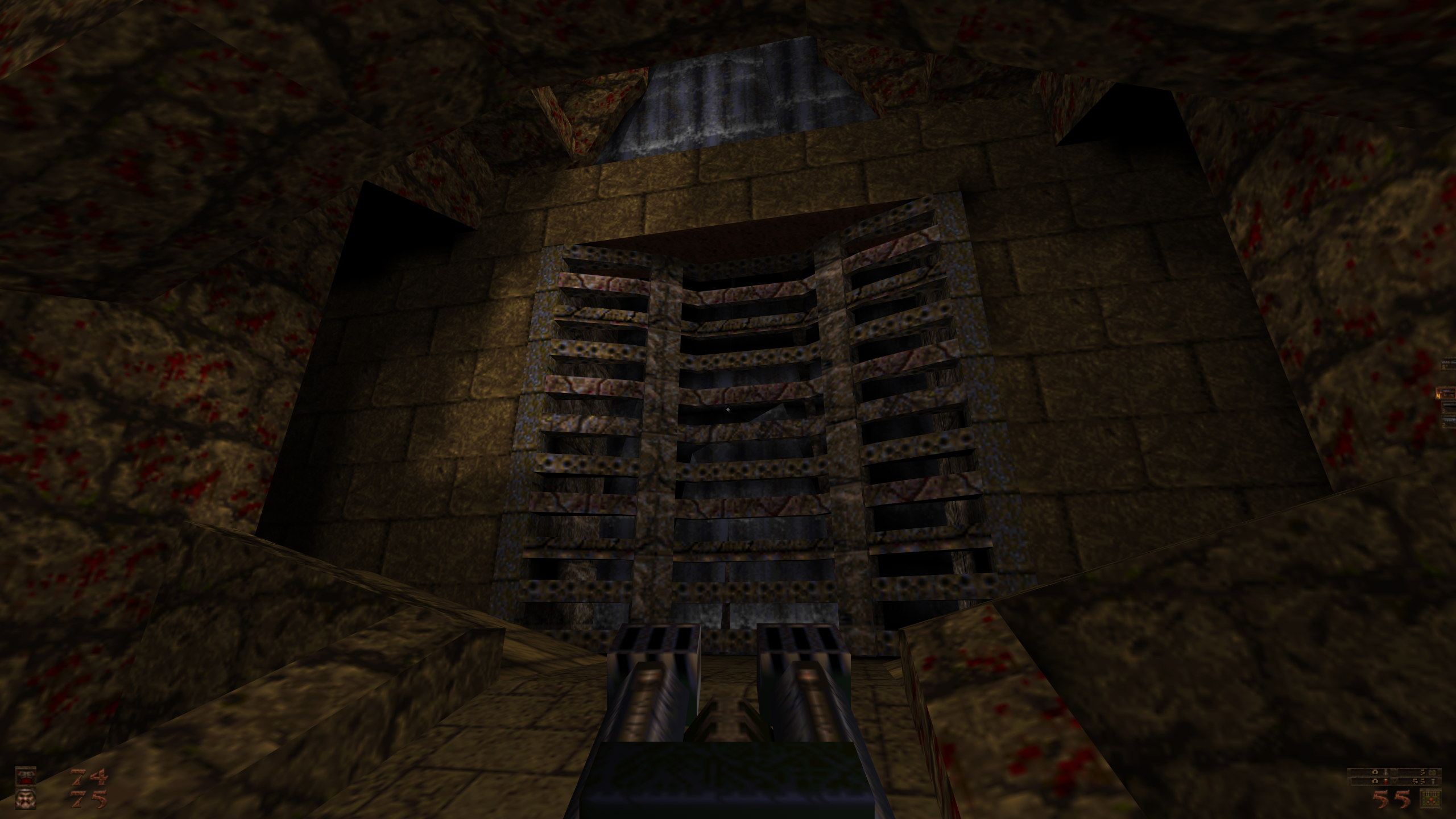
I am now in a phase of work that I have long been waiting for. The one where I can go back to places I built months ago, when my vision for this map was less formed, my confidence smaller than it is, and my skills with Trenchbroom much less developed than they now are. It's a delight to decorate my old flat brushes with embellishments. I am even finding spots where secrets can be installed. There is more brush building in this phase than I expected, but it's all happening so fast and doesn't involve any of the uncertainty I had while building the golden path. I am adding secrets and envisioning a progression that requires players to wander off into "mini-dungeons" to retrieve new weapons, otherwise they will need to struggle through tougher encounters with only a few basic weapons.
I have completed a playthrough of the map from start to finish and uploaded it to youtube for those who are interested in my progress and want to see the map as it currently stands. It's eight minutes long, with mininmal pickups, encounters, lots of placeholder textures and lighting. So don't be confused that this is a finished product!
2. Crafting
But I wonder what I want from this activity. And I suspect that thinking of my level design education in this light is also not good for its longevity or very radical... what can I hope to extract from this process? Bad thought. Nevertheless, it's sometimes what I think about and here I am trying to be honest. So I ask myself, do I want to develop into a professional level designer or maintain the practice as a hobbiest would or exist in some third space between the two or preceeding even the hobbiest category as someone just incidentally cultivating a magical forest with the neat dead things they collect, a practice which might be construed as sculpting but is something actually very different from that sort of work.
This relates to an question I've only recently started to acknowledge now that I have had some time to reflect my experience in grad school: whether my seriousness as a student was authentic passion or simply my capability for surviving in stressful situations. By all means I was a good student, passionate and curious. But I wasn't like some students I knew who already seemed like they were tenured professors, and who, in the time since we graduated, have gone one to teaching positions or PhD programs. The work that was so hard for me seemed so easy to them. I always assumed we enjoyed our victories in a like manor, but now I'm not so sure.
Was my work during that time, meaning my activity as researcher, student, and teacher, lacking an essential levity?
Levity is something of a personal value of mine. It must be present in everything I can commit myself to. Along with some degree of drag to add productive friction, a limitation, which often derives from my ability, or from learning something new like tools or methods or processes--my work must be freeing and light. I am talking about the True Work, borrowing from the book XMAN by Michael Brodsky. This is a work that does not feel like work, though it absolutely is and must be recognized as work.
I am reminded of an answer provided by thecatamites on cohost about how much time they spend working on games during a day, and feel very similar about my own work: "... in general i feel like i want anything i work on to reflect some kind of pleasure in the making and i always worry that relying too much on forcing my way through things will end up ruining it."
3. Theory
What I have really loved discovering as I've started to practice level design and making maps is the speed on iteration that is embraced by the practice and that a tool like Trenchbroom affords. A year ago by this point I was in grad school writing somewhat pretentiously, and speculatively, about how drawing bsp brushes in an editor could possibly replace writing sentences in my life. Now that I have done it for more than a year, to my surprise, I think that I was right if not at least very onto something with that idea (1) (2) (3). There is at least one experienced level designer I know from the internet who seems to appreciate how important it is to design and use tools that enable these sorts of practices. I'm no professional level designer, but I get the sense for Joe Wintergreen it's kind of an ethical good or some sort of necessity for the discipline and the industry
This is all quite affirming though I don't really know what seeing level design done in this way as a form of writing helps me understand about... I don't even know what? If anyone has any theories about writing, feel free to chip in here. But why stop being a pretentious grad student now? Maybe we can approach thinking about what composition goals lead to writing certain maps through a comparison of the maps which make up the "units" of Quake 2 in contrast with the "episodes" of all previous id first-person shooters including the original Quake.
Because I have been wondering what sort of map it is that I'm making. Maybe that's because I don't have many designed combat encounters inside of Nameless Revenge yet (a point of insecurity tbh) but I am struck by how it doesn't feel like most Quake maps I've played. This map is much larger than any you will find in the original four episodes. In Rocket Jump... by Craddock, you can read that the reason why Quake's maps are so small was because of basic engine limitation. Though it was their ambition to create a seamless world, or to at least establish a greater sense of continuity between maps, this wasn't feasible, and a decision was made early into Quake's development that level designers and artists would cease striving for a new narrative-spatial structure that id would later refer to as the "unit" and once again begin to create episodes, disparate collections of maps with very little narrative, spatial, or thematic cohesion between them.
And because I am designing for modern engines and with modern tools, I am obtaining something of that cohesion which id wouldn't until the development of Quake 2. Working with the unit as a form and the tools I now have access to softens the abstraction of space (which at any rate was always present more in Doom than in Quake see: Romero, Doom Guy: Life in First Person pg 164) and increases the semblance of a coherent narrative. Though I am designing just a single map, maybe Nameless Revenge is a unit in spirit, a quest leading from one place to another through several meaningful locations. A spacialized narrative in the same vein that Henry Jenkins observed in theme park spaces and videogame adaptations of films. I think this means that I am constructing more of a plot than a story with Nameless Revenge. And by this do I mean to imply Doom and Quake's episodes lack plot? I do, but there is a way to appreciate a lack of plot in the positive sense, as a quality of incoherency that is actually philosophically progressive.
As I get into level design it doesn't surprise me that my assumed method for building levels prefers a narrative form like the unit over an episode. In my experience writing fiction, studying literature, and overdesigning many TTRPG adventures, it's easy for me to do work with and on the level of plot. This is a matter of challenging how the videogames I grew up playing have taught me to see virtual space, as just a form of the adventure narrative. Because, as I now understand it, story is related to plot but is also something which must be understood as entirely different from it. We experience stories as something like unordered sense data before we ever understand them. The story of a delirious picnic or an excruciating swim is just experiential data, images of sensation awash in a feeling of time until the work of constructing a cognitive plot occurs somewhere after experience, amid thought, because story necessarily "consists of holes, lacunae, zones of indetermination, which, as in Joyce's Ulysses, challenge the reader's capacity to configure what the author seems to take malign delight in defiguring. In such an extreme case, it is the reader, almost abandoned by the work, who carries the burden of emplotment" (from Time and Narrative, Volume 1 pg 77). Paul Ricoeur described the qualitative experience of engaging with stories as overwhelming and sensorial above all, and very different from the analysis of plot as a verbal schematic set down line after line. As a mapper my aspiration is to understand realist authors like Hardy and all the rest of modern game designers but to practice a craft totally at odds with them. Maybe it's a modernist tendency within me (the part that is so delighted by mappers complimenting each other's brushwork lol) but I want to wander through virtual space and experience the raw immediacy of story as it is felt in works by the authors of Gravity's Rainbow, Zong!, and the A.T.L. DOOM wad. What I want is to facilitate a hallucinatory experience in virtual space, or at the very least represent one, rather than do good work in a particular genre. I think playing games like DOOM and Quake, old games in general, experimental games, and abandoned odradek creations uploaded to steam workshop pages signal the greatest encouragement to keep pursuing this kind of thinking as we all swim in the regressive culture of modern game design.
But of course you meet things along the way. Whatever comes from this practice, it won't meet my ideal and I would never want it to. There is great joy in the conservative forms of adventure narratives and, to speak plainly, the nervy immediacy of first person shooter action that you find in these old games as well as rare modern examples. I love videogames from all eras but I want to be an advocate for something more meaningful and progressive with my craft. I want to work with a modernist ethic from within the world of kitsch and schlock.